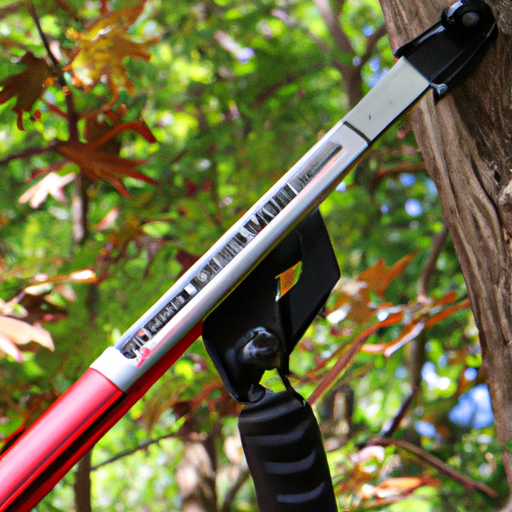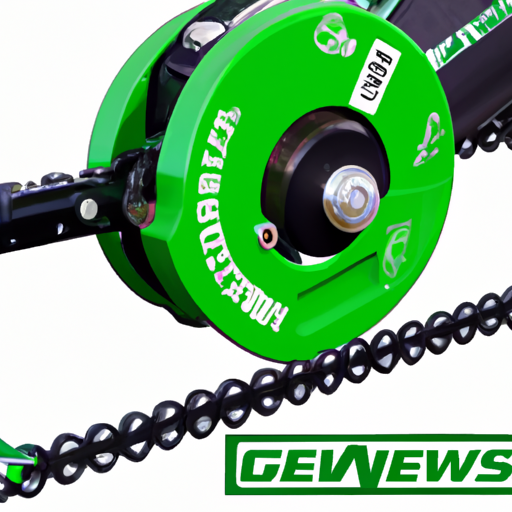Imagine effortlessly trimming those overgrown tree branches without the fear of injuries or accidents. In the world of power tools, the debate on the safety of pole saws versus chainsaws has sparked curiosity. Today, we will explore the question of whether pole saws are truly safer than chainsaws, and discover the key factors that make them the go-to tool for all your pruning needs. So, fasten your seatbelts and get ready to unravel the truth behind this fascinating comparison. Cutting through the confusion, we will explore the differences in design, functionality, and ease of use to determine which tool reigns supreme in the battle for safety and efficiency.
Are Pole Saws Safer Than Chainsaws?
When it comes to pruning trees or cutting branches, having the right tool is important for both efficiency and safety. Two popular options for these tasks are pole saws and chainsaws. But which is the safer choice? In this article, we will compare the safety features of both pole saws and chainsaws, examining factors such as user control, kicking back, maintenance and inspection, noise levels, weight and balance, cutting capacity, and environmental impact. By the end, you’ll have a comprehensive understanding of the safety considerations for each tool, helping you make an informed decision for your next outdoor project.
What Are Pole Saws and Chainsaws?
Before delving into the safety comparisons, let’s first clarify what pole saws and chainsaws actually are. A pole saw is essentially a chainsaw affixed to a long pole, allowing you to access high branches without the need for a ladder. It provides extended reach and allows you to prune trees effectively from the ground. On the other hand, a chainsaw is a portable power tool consisting of a motorized saw blade that cuts through wood quickly and efficiently. Both tools serve the purpose of cutting branches and can be either gas-powered or electric.
Comparison of Safety Features
When it comes to safety, both pole saws and chainsaws incorporate certain features to minimize risks. However, understanding the differences in these safety features is crucial in determining which tool is ultimately safer for your needs.
Safety Considerations: User Control
User control is a vital aspect of safe operation for any tool. While both pole saws and chainsaws require caution and proper handling, pole saws generally offer greater user control. With a pole saw, you have the advantage of standing on the ground while operating the tool, reducing the risk of slips or falls from elevated positions. Additionally, pole saws often come with lightweight construction and ergonomic design, making them easier to handle and maneuver, especially for those with less upper body strength.
Safety Considerations: Kicking Back
Kicking back refers to the sudden backward movement of a saw during operation, which can be dangerous for the user. Chainsaws are more prone to this phenomenon due to their powerful cutting action. However, advancements in chainsaw technology have led to the inclusion of anti-kickback features such as chain brakes and low kickback chains. In contrast, pole saws have limited power and cutting capacity, reducing the chances of kickback events. These factors make pole saws a safer option in terms of kicking back.
Safety Considerations: Maintenance and Inspection
Proper maintenance and regular inspection play a crucial role in ensuring the safe operation of any tool. Chainsaws require more intensive maintenance compared to pole saws due to their complex internal mechanisms. Chain tension, lubrication, and sharpness are key areas that require regular attention. On the other hand, pole saws have simpler designs and fewer moving parts, making them easier to maintain and inspect. However, regardless of the tool, it is important to always follow the manufacturer’s instructions and perform routine maintenance and inspection to ensure safe operation.
Safety Considerations: Noise Levels
Noise levels can impact both user comfort and safety. Chainsaws are known for their loud noise output, which can lead to hearing damage if proper hearing protection is not used. Furthermore, the high decibel levels can cause distractions, increasing the risk of accidents. In comparison, pole saws generally have lower noise levels, minimizing potential hearing damage and allowing you to remain more aware of your surroundings. However, it is still advisable to wear hearing protection when operating any power tool.
Safety Considerations: Weight and Balance
The weight and balance of a tool directly affect user fatigue and control. Chainsaws tend to be heavier, especially gas-powered models, which can lead to arm fatigue during prolonged use. This fatigue may compromise control and increase the risk of accidents. In contrast, pole saws are typically lighter and feature better weight distribution, making them easier to handle for extended periods. The lighter weight and improved balance of pole saws contribute to their overall safety.
Safety Considerations: Cutting Capacity
While both pole saws and chainsaws are designed for cutting branches, they differ in terms of their cutting capacity. Chainsaws have more power and higher cutting speeds, allowing them to tackle larger branches effectively. However, this cutting capacity also increases the potential risks associated with using chainsaws. Pole saws, though not as powerful, are safer for smaller branches and general pruning tasks. When considering safety, it is essential to match the tool’s cutting capacity to the specific job requirements to minimize risks.
Safety Considerations: Environmental Impact
Environmental impact may not be a direct safety consideration, but it is an important factor to consider when choosing between pole saws and chainsaws. Chainsaws produce exhaust emissions due to their gasoline engines, contributing to air pollution and carbon emissions. In contrast, electric-powered pole saws produce zero emissions during operation. If environmental sustainability is a concern for you, opting for an electric pole saw can be a safer choice for both you and the environment.
Conclusion
In conclusion, both pole saws and chainsaws have safety features in place to mitigate potential risks. However, when considering various safety aspects such as user control, kicking back, maintenance and inspection, noise levels, weight and balance, cutting capacity, and environmental impact, pole saws generally come out as the safer option. Their extended reach, lightweight construction, and reduced risks of kickback make them a reliable choice for homeowners and professionals. That being said, it is important to use any tool responsibly and follow safety guidelines provided by the manufacturer to ensure injury-free operation. Happy pruning!


